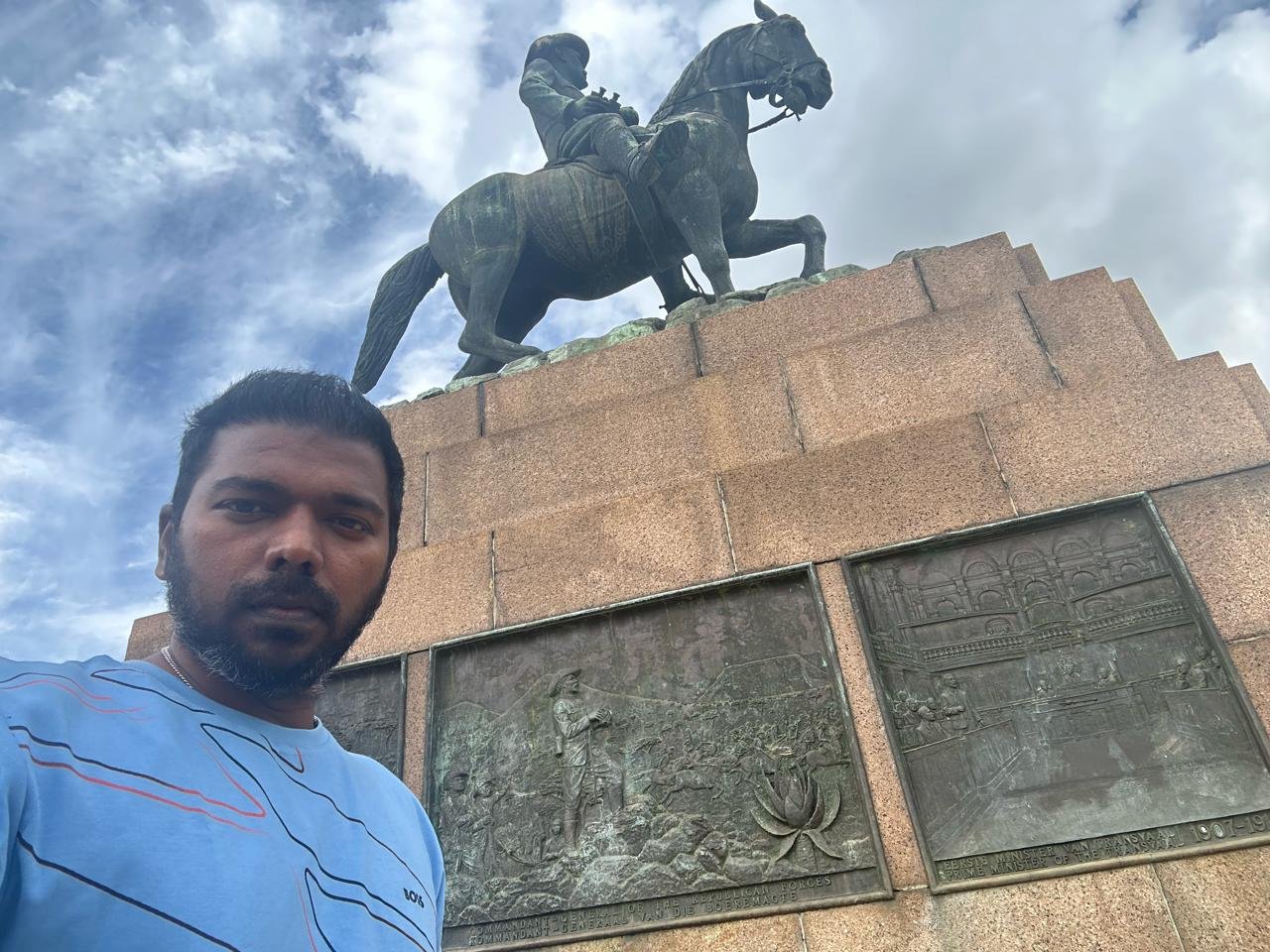

Nelson Mandela Square, Sandton, Johannesburg
In this photo, I’m standing in front of the iconic Nelson Mandela statue at Nelson Mandela Square in Sandton, Johannesburg. This bustling area is not only a major business district but also a vibrant social and cultural hub. The statue, erected in 2004, honors South Africa’s beloved leader and Nobel Peace Prize winner, Nelson Mandela. It stands as a powerful symbol of peace, freedom, and the enduring spirit of the South African people. The square is surrounded by upscale shops, restaurants, and cafes, making it a perfect spot to experience the city’s modern and dynamic atmosphere.

Paul Kruger Statue, Church Square, Pretoria
Here, I’m posing with the statue of Paul Kruger, a prominent figure in South African history, located in Church Square, Pretoria. Paul Kruger, also known as “Oom Paul,” was the President of the South African Republic (Transvaal) and a key leader during the First and Second Boer Wars. The equestrian statue was erected in 1954 and serves as a reminder of the country’s complex and multifaceted past. The square itself is a historic landmark surrounded by beautiful and architecturally significant buildings, reflecting the rich heritage of Pretoria.
Shaka Zulu Restaurant, Johannesburg
This photo captures my visit to the Shaka Zulu Restaurant in Johannesburg. The restaurant’s decor is inspired by the Zulu culture, one of the largest ethnic groups in South Africa. The shields on the wall, labeled with different names, represent traditional Zulu weapons used by warriors. Shaka Zulu was a formidable leader and founder of the Zulu Kingdom, known for his military innovations and unification of various clans in the early 19th century. Dining here offers not only a taste of traditional Zulu cuisine but also an immersive cultural experience.

Voortrekker Monument, Pretoria
In this photo, I’m at the Voortrekker Monument in Pretoria, a massive granite structure built to commemorate the Voortrekkers who left the Cape Colony in the 1830s and 1840s. The monument, completed in 1949, is surrounded by a large amphitheater and offers panoramic views of the city. The interior features an intricate marble frieze depicting the history of the Great Trek, and the Hall of Heroes contains artifacts and exhibits related to this significant period in South African history. It’s a poignant reminder of the country’s pioneer spirit and the enduring legacy of the Afrikaner people.
Women’s Monument, Voortrekker Monument, Pretoria ![Women’s Monument]
This image shows me standing next to the Women’s Monument at the Voortrekker Monument site in Pretoria. The monument honors the women and children who suffered and perished during the Anglo-Boer Wars. It features a touching sculpture of a woman and her children, symbolizing the resilience and sacrifice of the Boer families. The monument is a testament to the strength and endurance of women during times of conflict and is a vital part of South Africa’s historical narrative.

My journey through South Africa has been a profound exploration of its rich history and diverse culture. From the bustling streets of Johannesburg to the historic landmarks of Pretoria, each site offers a unique glimpse into the country’s past and present. Visiting these monuments and cultural sites has deepened my appreciation for South Africa’s complex and inspiring story. Stay tuned for more adventures as I continue to explore this beautiful and dynamic country.

Copyright © 2024 Let's See The World . All rights reserved.
Designed by Xharvoc™ with ❤ in New Delhi.